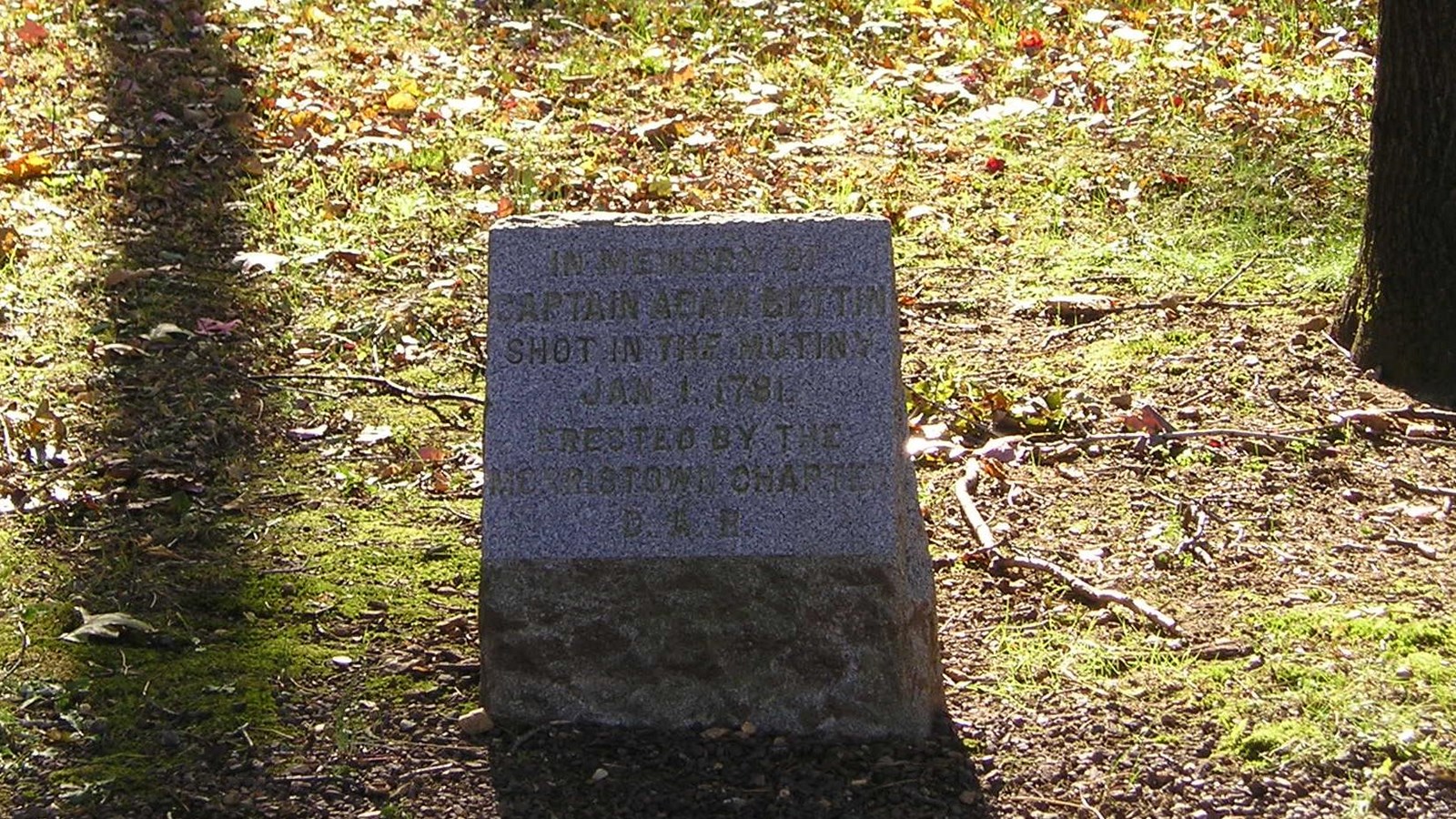Last updated: December 11, 2021
Place
Bettin Oak Monument

NPS
The Pennsylvania Line, under the command of General Anthony Wayne, returned to Jockey Hollow for the winter of 1780-1781. They camped along the Mendham-Elizabethtown Road at the base of the hill on the east side of the Wick farm orchard.
Most of the nearly 2,000 soldiers of the Line mutinied on January 1, 1781 because of disputes over their terms of enlistment. During the mutiny one enlisted man was killed in the orchard. A couple of officers were wounded and one was killed.
A lieutenant gave this description of the officer’s death, “a solider from the mob made a charge upon Lieut. Col. William Butler, who was obliged to retreat between the huts to save his life. He went around one hut and the soldier around another to head him, met Capt. Bettin who was coming down the alley, who seeing a man coming towards him on a charge, charged his Espontoon to oppose him, when the fellow fired his piece and shot the Captain through the body and he died two hours later."
This monument to the dead officer was erected around 1900. It replaced an earlier monument. Local tradition claims the monument marks the burial site of the officer killed during the mutiny. However there is no documentation to prove this. While the quote and the monument you see both claim the officer’s name was “Bettin,” records show the name was actually Bitting.
Local tradition also claimed he was buried near a black oak tree which became known as the “Bettin Oak.” A 1938 study concluded that the Bettin Oak was more than 200 years old and was a well-developed tree of at least ten inches in 1779.
On November 25, 1971, wind and heavy snow caused the weakened Bettin Oak to fall. In 1975 a red oak sapling, the state tree of New Jersey, was planted nearby as a replacement.
